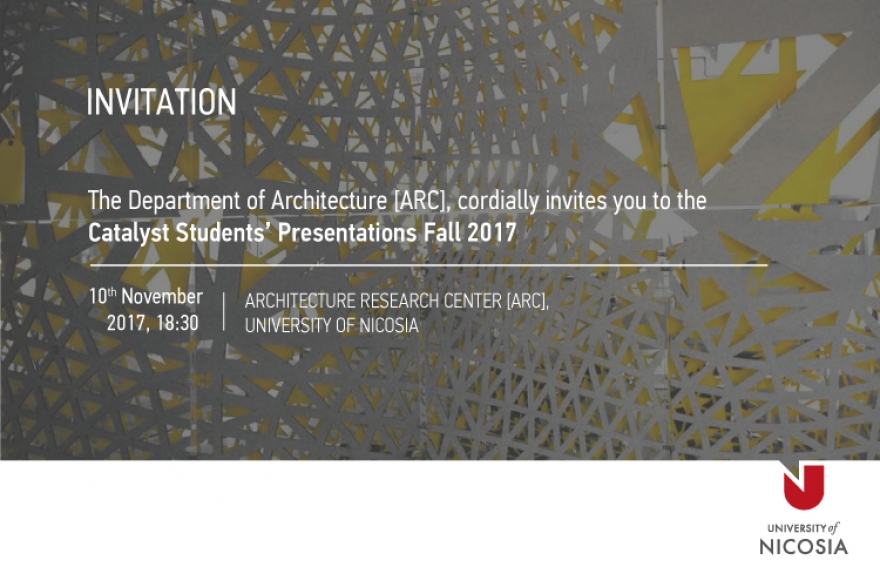

Catalysts Lecture and Presentations of Architecture Department | Fall 2017
November 10, 2017 @ 6:30 pm - 9:00 pm
“At a point when I was stuck in my work, he asked me, ‘What is your guiding intuition?’ I replied on the spur of the moment, ‘Making is thinking.’
Richard Sennett ‘The Craftsman’
The Department of Architecture [ARC], cordially invites you to the Catalyst Student Presentations Fall 2017 on Friday, November 10th @ 18:30 @ [ARC].
[ARC] Catalysts are elective, intensive one week courses that change every semester depending on the interests of faculty and visiting specialists. With the catalyst in place, the faculty are able to respond to newly developing research or design practices offering motivating and exciting opportunities to students and participants.
The catalysts running for this semester Fall 2017 [ARC] are the following:
Section 01: 3D BGA
Coordinators: Mr Georgiou Michalis
The workshop aims to explore the mechanisms behind the design, visualization and application of three-dimensional moiré effect motion installations. As opposed to traditional two-dimensional moiré animations, the novel approach combines and utilizes both the depth of field and motion of spectator in order to achieve large-scale, analogue animation sets. The utilization of computational tools, virtual reality environments and physical testing, will enable the exploration of optimum visual experiences for spectators and verify the realization of three-dimensional motion effects. Furthermore, the workshop will explore possible architectural applications of the above technique and evaluate their fitness in urban context. During the workshop, multiple objectives including legibility, animation speed, human vision limitations, and fabrication constraints will be assessed towards an optimum outcome. Parallel to the investigations of 2D and 3D moiré effect animations, computational tools will be used to simulate motion and incorporate geometric characteristics and topology constraints.
The proposed workshop will be based on the expertise gained from a recently completed project involving the application of the above techniques. Presentation and a visit to the project followed by prototyping with both physical and virtual testing will guide a process of real‐time visualization of proposals that would be evaluated against a number of criteria using VR technologies. The process will be supported using affordable, yet accurate apparatuses as Google Cardboard to enable bridging simulation results and real-life perspective needed to develop and eventually construct a physical motion structure.
Section 02: Experimenting with the Living Past
Coordinator: Dr Efstathiou Anna
The 5-day workshop aims to introduce students to the significance and sustainable preservation of built heritage. The built environment and specifically our architectural heritage lie at the heart of our sense of place. The restoration of the built environment has been acknowledged internationally as one of the main drivers of sustainable development and local regeneration. Understanding how architectural heritage changes and recognising its value and significance, is the key to successful and sustainable development, management and preservation of our cultural heritage, but also to the effective and conscious production of new spatial environments.
